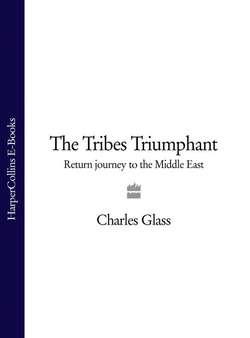Читать книгу The Tribes Triumphant: Return Journey to the Middle East - Charles Glass, Charles Glass - Страница 18
Ancient Philadelphia
ОглавлениеAmman was dark by the time we reached its outskirts. Thrown like a Bedouin blanket over a batch of hilltops, the city had outgrown the Circassian village where Prince Abdallah of the Hejaz pitched camp in March 1921. Abdallah had embarked on a quixotic mission to restore his brother Feisal’s throne in Damascus after France had massacred Feisal’s Arab army at the Maysaloun Pass and robbed the Arabs of their independent state. Abdallah’s adventure, if allowed to proceed, threatened war between Britain and France. Winston Churchill, by then colonial secretary, persuaded Abdallah to accept a principality to be called Transjordan with its capital in Amman. This involved compromises for Abdallah, who must have known the French would annihilate his Bedouin troops; for the Arabs of Greater Syria, a vast majority of whom had told the American King – Crane Commission of their desire for independence and unity; and for the Zionists, whose territorial ambitions included both banks of the Jordan. Until then, Britain and its Zionist protégés had called the country Eastern Palestine. Britain revised its League of Nations Mandate in 1922 to exclude the East Bank from the Balfour Declaration’s proposed ‘Jewish home’. It assumed responsibility for Prince Abdallah’s foreign policy and, under the able direction of General John Bagot Glubb, organized his army into the Arab Legion. Zionists who rejected the revision of the Mandate and insisted the future Israel comprise both banks of the River Jordan came to be called the Revisionists. Its leaders would be Vladimir Jabotinsky, Menachem Begin, Yitzak Stern, Yitzak Shamir and, later, Ariel Sharon.
Jordan, removed from the Palestine Mandate, did not escape the Palestine problem. Half of the lighted hilltops of night-time Amman belonged to Palestinians, whose refugee camps were as much a part of the city, albeit poorer, as the East Bankers’ neighbourhoods. Jordan had fought three wars over Palestine. In 1948, Abdallah – who became king of independent Jordan in 1946 – captured East Jerusalem and the West Bank. In 1967, his grandson, King Hussein, lost Abdallah’s 1948 conquests. In both wars, Jordan absorbed refugees whom the Israeli army had expelled. Then came the third war. The refugees, led by Yasser Arafat, and the native Jordanians under King Hussein waged ferocious battles in 1970 and 1971. The Palestinians lost, and the Hashemite throne survived.
The city we entered had grown to include a million people on the hills where Abdallah had found about three thousand Circassian settlers and a few hundred Arabs. At one of Amman’s many traffic roundabouts, twenty young men were dancing in a large plaza. Clasping one another’s shoulders, they formed a line and kicked their legs out to the beat of the tambour, the Arab drum, and the clapping and singing of boys and girls. They were having great fun. Dance festivals had evolved over millennia: pagan feasts absorbed by Christian holidays, Christianity giving way to Islam, sacred holidays secularized by the nation. And in all of Syria, there was the dabke, a communal dance like a Scottish reel. There were the chababi, a pipe, and the tambour, and clapping, and the mixing of sexes, ages, classes. I used to see this dancing at the great mahrajans in Mount Lebanon, at regional festivals in Jebel Alawi in northern Syria, among the Druze and in the towns of the West Bank. They might celebrate a birth, a wedding, a harvest, a saint’s day. These boys, girls, men and women danced in the forecourt of Amman’s telecommunications centre, under blazing floodlights. Above them loomed a quadruple-life-size, Hollywood-style portrait of King Abdallah holding a cellphone to his ear. Amman had a new mobile telephone network! An ancient ritual that had been paganized, Christianized, Islamized and Arabized was now commercialized. How else to herald the new era?
